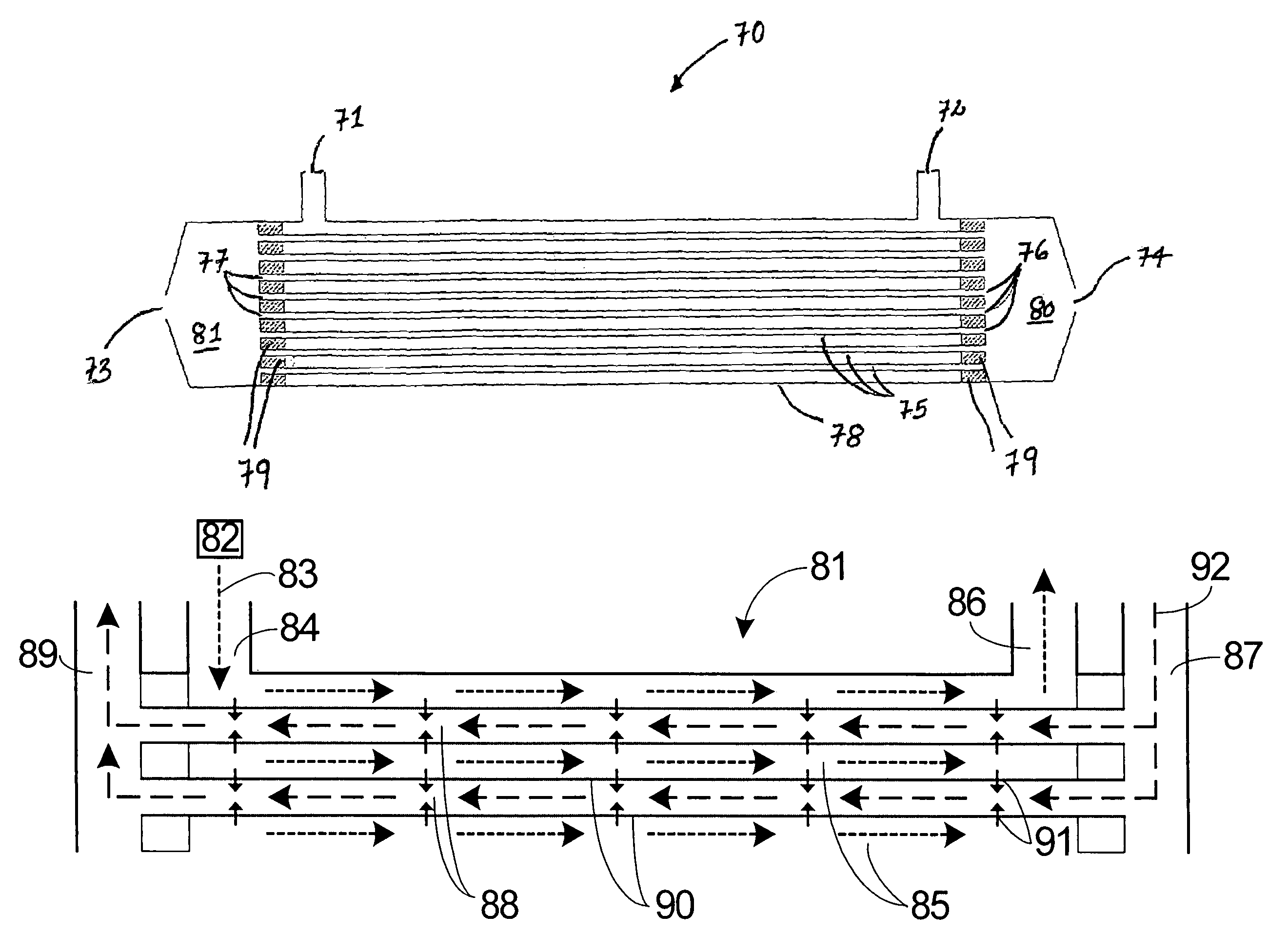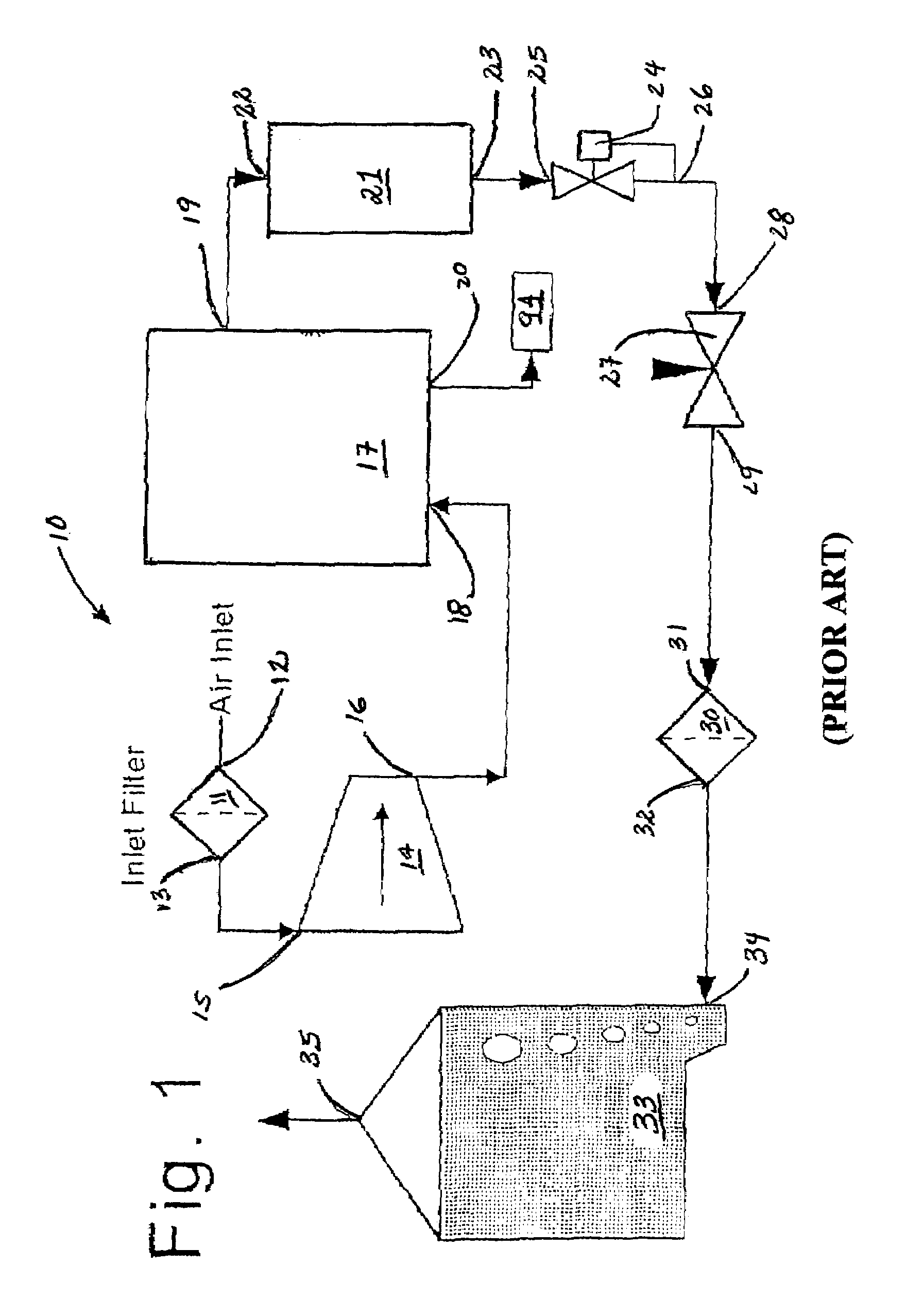Oxygen humidifier
a technology of oxygen humidifier and oxygen filter, which is applied in the direction of respirator, membrane, separation process, etc., can solve the problems of dehydration of the nasal passage and respiratory system, dehydration of the nitrogen in the molecular sieve, and discomfort and irritation of patients, so as to prevent over humidification and increase the selectivity of water
- Summary
- Abstract
- Description
- Claims
- Application Information
AI Technical Summary
Benefits of technology
Problems solved by technology
Method used
Image
Examples
Embodiment Construction
[0022]Referring to FIG. 1, FIG. 1 shows a typical oxygen concentrator 10 which uses a bubbler 33 for humidification. In the oxygen concentrator 10 of FIG. 1, ambient air is drawn into an inlet 12 of an inlet filter 11. The inlet filter 11 functions to remove a portion of the particulates and bacteria from the ambient air. Inlet filter 11 includes an outlet 13 that is in fluid communication with an inlet 15 of a compressor 14 for increasing the pressure of the ambient air. An outlet 16 of the compressor 14 is in fluid communication with an inlet 18 of an adsorption bed 17, adsorption bed 17 comprising of molecular sieves for enriching the gas with oxygen by removing nitrogen therefrom.
[0023]In regards to adsorption bed 17, adsorption bed 17 actually is comprised of more than one (1) bed of sieves, as described earlier, and includes a switching valve and associated controls. For simplicity, we describe adsorption bed 17 as a single unit.
[0024]The adsorption bed 17 includes an outlet 1...
PUM
 Login to View More
Login to View More Abstract
Description
Claims
Application Information
 Login to View More
Login to View More - R&D
- Intellectual Property
- Life Sciences
- Materials
- Tech Scout
- Unparalleled Data Quality
- Higher Quality Content
- 60% Fewer Hallucinations
Browse by: Latest US Patents, China's latest patents, Technical Efficacy Thesaurus, Application Domain, Technology Topic, Popular Technical Reports.
© 2025 PatSnap. All rights reserved.Legal|Privacy policy|Modern Slavery Act Transparency Statement|Sitemap|About US| Contact US: help@patsnap.com



